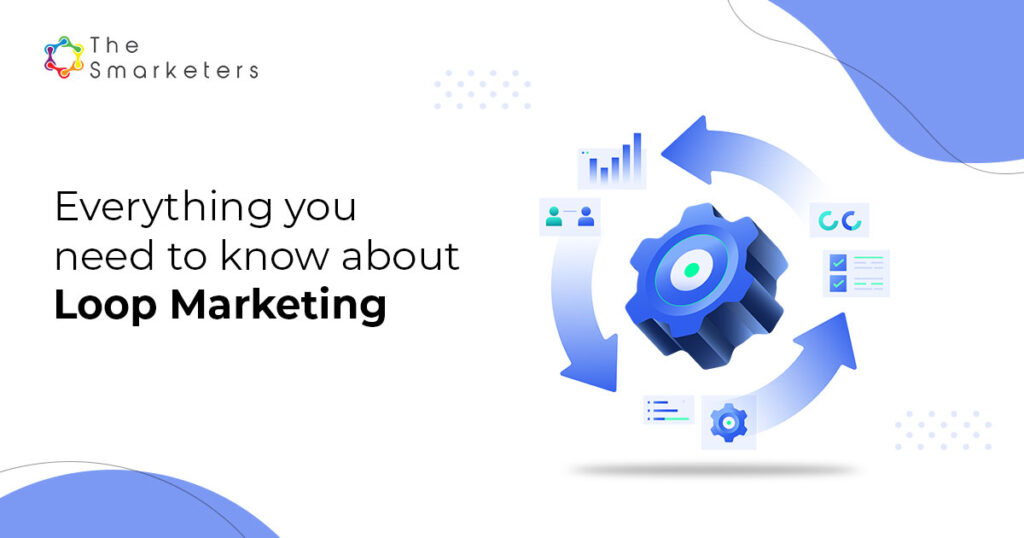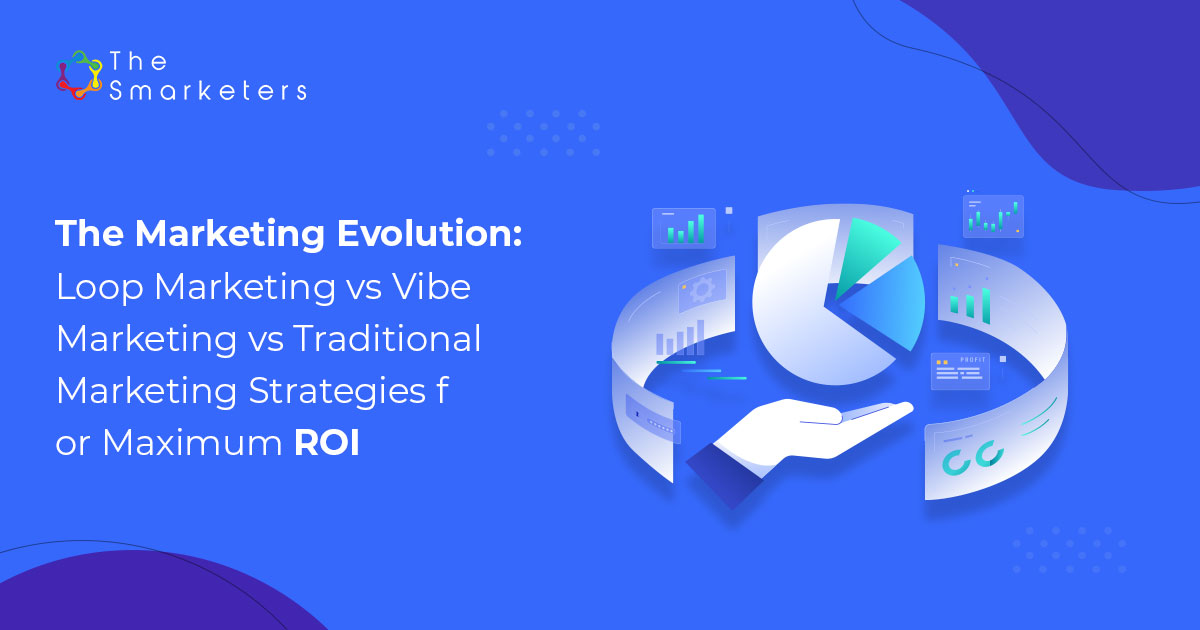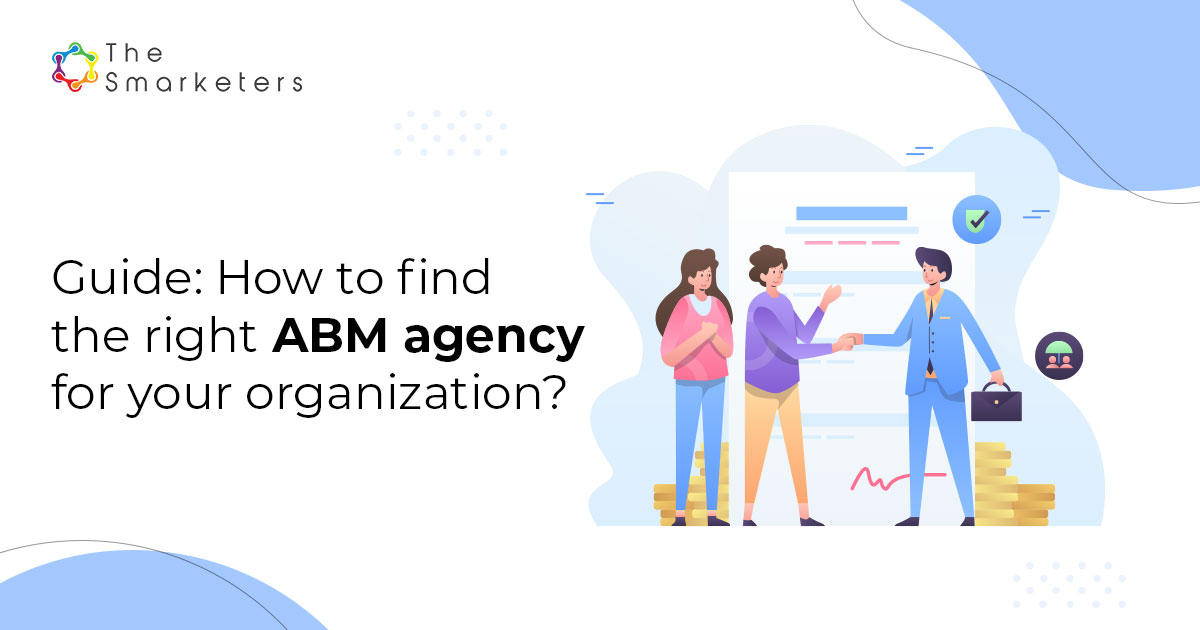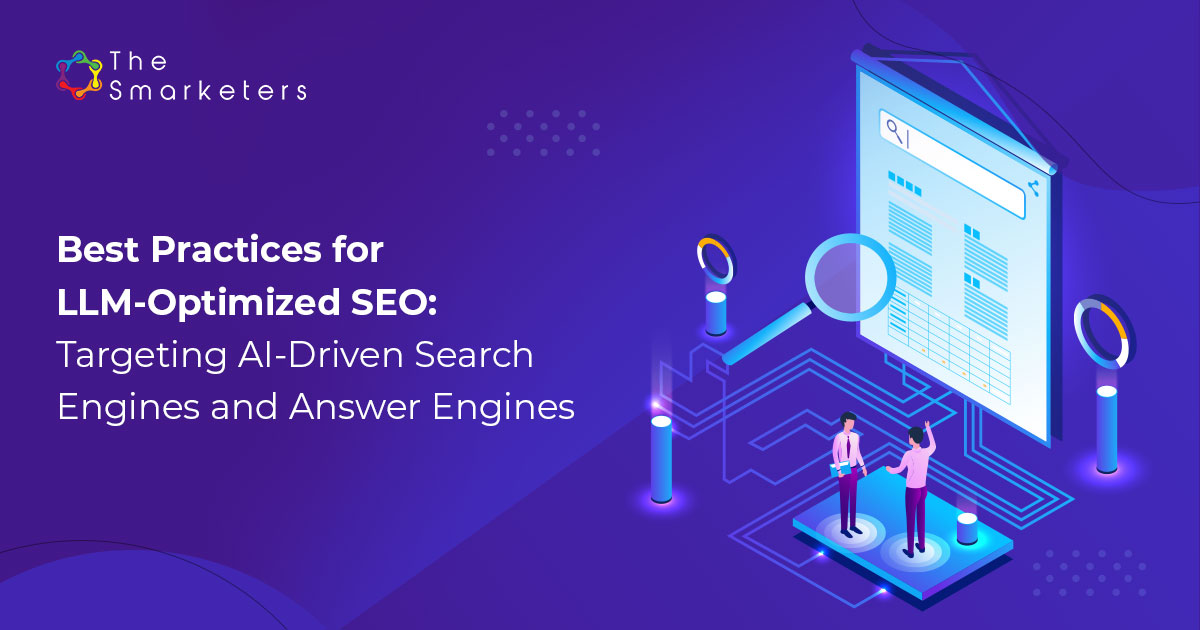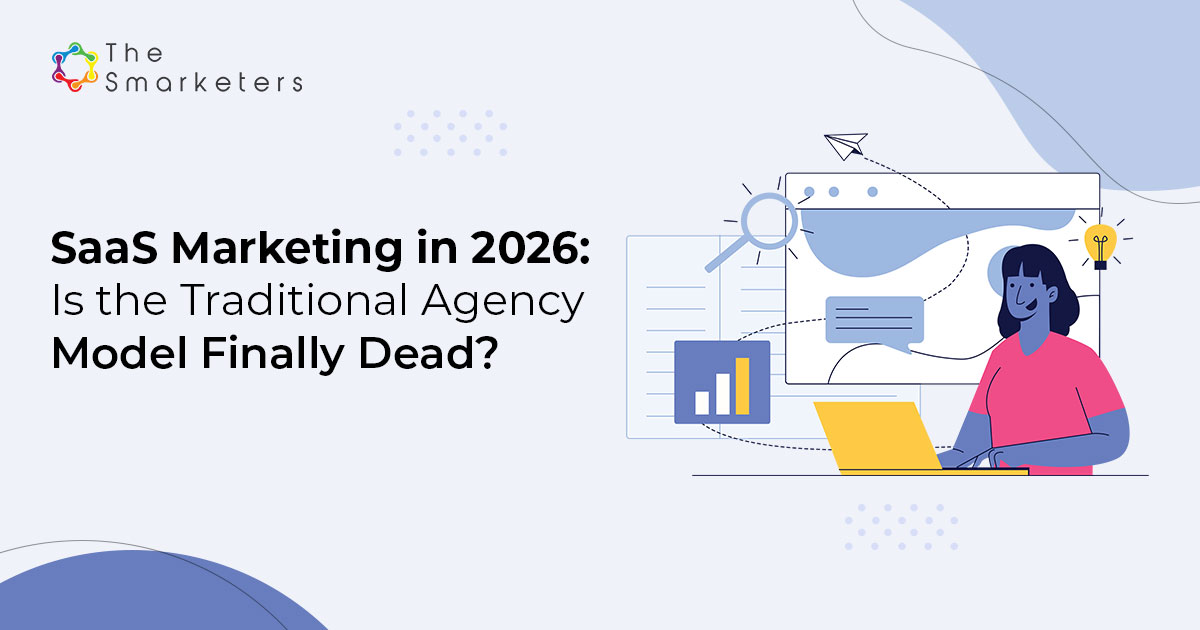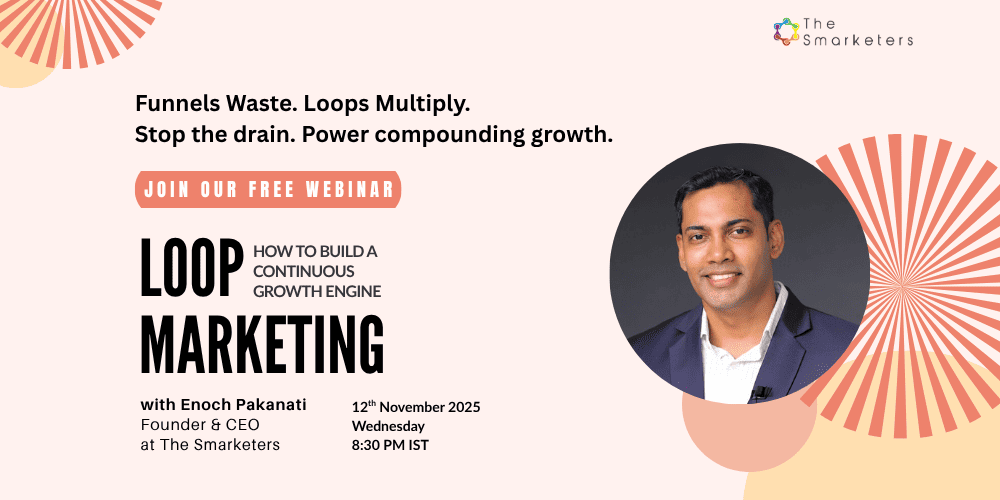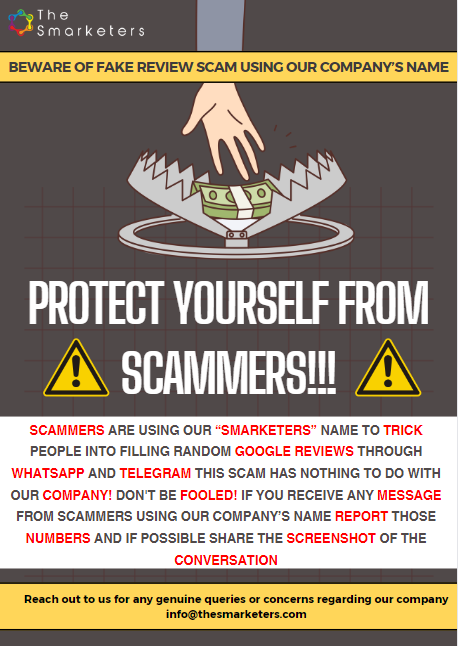Table of Contents
- Understanding Loop Marketing and Its Core Framework
- The Express Stage: Building Your Brand Foundation
- Defining Your Unique Brand Identity and Voice
- Creating AI-Compatible Style Guides and Brand Standards
- Identifying Your Ideal Customer Profile Using AI Analysis
- Developing Core Content Topics Around Customer Questions
- The Tailor Stage: Personalizing Customer Experiences
- AI-Powered Audience Segmentation Based on Intent Signals
- Creating Adaptive Content That Responds to Individual Behavior
- Using Unified Customer Data for Relevant Messaging
- Moving Beyond Basic Personalization to Segment-of-One Marketing
- The Amplify Stage: Expanding Your Reach Across Channels
- The Evolve Stage: Continuous Learning and Optimization
- How Loop Marketing Integrates with the Endless Customers System
- Implementing Loop Marketing Successfully in Your Organization
Imagine Sarah, a marketing director at a growing SaaS company, watching her conversion rates drop month after month despite increased ad spend. Her team was creating tons of content, but it felt scattered and generic. Sound familiar? Sarah’s story changed when she discovered loop marketing – a dynamic approach that helped her team create personalized experiences that actually converted. Within 90 days, her lead quality improved by 40% and customer acquisition costs dropped by 25%.
Loop marketing is HubSpot’s four-stage framework designed for growth in the AI era, where traditional funnels no longer work effectively. This comprehensive guide is for marketing directors, business owners, and growth teams who want to build a continuous cycle of engagement that gets smarter with every interaction.
You’ll discover how to implement the express tailor amplify evolve framework to build your brand foundation, personalize customer experiences at scale, and optimize your marketing efforts in real-time. We’ll also explore how loop marketing integrates with proven systems like Endless Customers to help you become the most trusted name in your industry. Plus, you’ll get practical implementation strategies, real-world case studies, and actionable metrics to track your success.
Ready to transform your marketing from a one-way funnel into a dynamic loop that drives continuous growth? Let’s dive in.
Understanding Loop Marketing and Its Core Framework

Definition and Purpose of Loop Marketing in the AI Era
Loop marketing represents a fundamental shift in how you approach customer engagement and business growth in our AI-driven world. HubSpot defines loop marketing as a dynamic, four-stage playbook that combines the efficiency of AI with human authenticity to drive growth. Unlike traditional marketing approaches that rely on predictable, linear pathways, loop marketing creates a continuous cycle that learns and becomes more effective with each iteration.
The purpose of loop marketing extends far beyond conventional lead generation. Your goal with this framework is to build a system that adapts to modern buyer journeys, where customers discover information across multiple channels like YouTube, social media, and communities—not just on your website. This approach acknowledges that buyers now complete around 80% of their research independently before ever contacting a salesperson, according to Forrester research.
In the AI era, your marketing must be visible where your buyers are asking questions, whether they’re consulting other people on social media or asking AI models like ChatGPT. Loop marketing matters because it’s specifically built for this new reality, where nearly 60% of all Google searches end without a click, according to SparkToro research. Your brand needs to create strong signals across multiple channels to build recognition as a trusted authority that both humans and AI algorithms can identify and recommend.
The framework moves you away from simply chasing clicks to earning trust and building a memorable brand, which is the only sustainable way to grow in the AI era. By focusing on creating continuous cycles of engagement and learning, you position your business to thrive regardless of how buyer behaviors continue to evolve.
The Four Stages: Express, Tailor, Amplify, and Evolve
Loop marketing operates through four interconnected stages that create a continuous cycle of improvement and growth. What makes this framework particularly powerful is that you can enter at any stage depending on your business’s most significant opportunity or challenge at the moment.
Express: Building Your Brand Foundation
The Express stage focuses on defining and solidifying your brand’s identity. You should start here if you struggle to explain what makes your company different or if your customers describe your value better than you do. The goal is to lock in who you are, what you stand for, who you’re talking to, and how you express that identity consistently everywhere.
During this stage, you’ll identify your ideal customer profile using AI to efficiently analyze customer reviews, social media comments, direct messages, emails, and call notes. This analysis helps you understand what your customers care about and what unique value you provide. You’ll then create a professional style guide that defines your brand’s mission, tone, and personality for AI to work with, ensuring consistency across all touchpoints.
Your Express stage work also involves brainstorming core content topics by mapping out the foundational questions your buyers have. A strategic starting point is planning content that addresses The Big 5 topics every buyer researches: cost, problems, comparisons, reviews, and best-in-class solutions.
Tailor: Personalizing Customer Experiences
The Tailor stage focuses on making your marketing message feel personal and relevant to what each individual cares about right now. You should begin here if your marketing feels one-size-fits-all and you’re seeing engagement rates drop. The goal is to move beyond simple personalization to deliver content that is genuinely relevant, treating each customer as a “segment of one.”
Your tailoring efforts involve using AI to analyze customer behavior and spot patterns, allowing you to segment your audience by factors like industry or buying triggers. You’ll create adaptive content including landing pages, ads, or calls to action that adapt based on unified data like CRM activity and web behavior.
Video content becomes particularly powerful in this stage, as you can embed relevant videos from your content library on your website to build trust and show prospects you understand their specific needs. This approach goes far beyond inserting first names into email templates—it delivers genuinely valuable, contextual experiences.
Amplify: Expanding Your Reach Across Channels
This stage is about getting your clear, tailored message in front of as many right-fit people as possible. Start here if you have content that converts but isn’t getting enough visibility, or if you’re invisible in AI search engine results. The focus shifts to diversifying your channels and being present where your customers are, rather than waiting for them to find you.
Your amplification strategy involves identifying where your ideal customers spend their time, which might include platforms like YouTube, Reddit, podcasts, or LinkedIn. You’ll optimize for AI engines through AI Engine Optimization (AEO) by reformatting your best content with Q&A sections and short, direct answers ready to be surfaced in AI search results.
Content remixing becomes essential as you use AI to repurpose single pieces of content for different channels—turning blog posts into TikTok video concepts or LinkedIn carousels. You’ll also collaborate with trusted influencers in your industry to get your message in front of the right people through established, credible voices.
Evolve: Continuous Learning and Optimization
The final stage focuses on learning quickly, adjusting in real time, and making every campaign better than the last. Focus on this stage if you have active campaigns and want to optimize them for better results. The goal is creating a habit of testing, learning, and tweaking that allows your results to compound over time.
Your evolution process involves predicting success before launching campaigns by using AI to analyze which ideas are most likely to convert based on past performance. After launch, you’ll monitor performance in real-time using AI to track engagement and conversion signals, highlighting what matters so you can adjust your strategy quickly.
Testing and adjusting become rapid processes as you A/B test different creatives, headlines, or landing pages and make changes based on real-time data. You’ll also improve your sales process by using campaign learnings to identify which content most effectively educates buyers, then formally integrate it into your sales process to shorten sales cycles and increase close rates.
How Loop Marketing Differs from Traditional Funnel Approaches
Loop marketing represents a fundamental departure from traditional funnel approaches in several critical ways that directly impact your business growth potential. Understanding these differences helps you appreciate why the loop framework is better suited for today’s complex buyer journeys.
Traditional funnels operate on a linear, one-way path where you guide prospects through predetermined stages: awareness, consideration, decision, and purchase. The assumption is that buyers move predictably from one stage to the next, with your marketing efforts pushing them along this predetermined journey. This approach worked when buyers had limited information sources and relied heavily on your content and sales process for education.
Loop marketing, however, acknowledges that modern buyers don’t follow linear paths. Instead, they jump between channels, research independently, and often complete most of their buying journey before engaging with your sales team. The loop creates a continuous cycle that learns and adapts to these non-linear behaviors, becoming more effective with each iteration.
The loop framework also differs in its approach to customer data and personalization. Traditional funnels often rely on demographic segmentation and broad personas, treating large groups of prospects similarly. Loop marketing uses AI-powered behavioral analysis to create dynamic segments based on real-time intent signals, allowing you to treat each customer as a “segment of one.”
Channel approach represents another significant difference. Traditional funnels typically focus on driving traffic to your website through a limited number of channels, often prioritizing search engine optimization and paid advertising. Loop marketing distributes your presence across multiple touchpoints where your customers actually spend time, including social platforms, AI search engines, and community spaces.
The measurement philosophy also differs dramatically. Traditional funnels focus on conversion metrics at each stage, often emphasizing volume-based metrics like leads generated or cost per acquisition. Loop marketing emphasizes trust signals, engagement quality, and the cumulative effect of brand authority across multiple channels, recognizing that sustainable growth comes from being known and trusted rather than simply generating clicks.
Why the Linear Marketing Model No Longer Works
The linear marketing model has become increasingly ineffective due to several fundamental shifts in how people discover, research, and purchase products and services. Understanding these shifts helps you appreciate why adopting loop marketing has become essential for sustainable growth.
Buyer behavior has fundamentally changed in the digital age. Your prospects now have access to virtually unlimited information sources, from peer reviews and social media discussions to AI-powered search tools that provide instant answers to complex questions. They no longer depend on your marketing materials as their primary information source, completing most of their research independently before ever engaging with your brand.
The rise of AI-powered search represents a particularly disruptive force. When buyers ask questions to ChatGPT, Claude, or other AI tools instead of searching Google, they receive synthesized answers that may or may not include your brand. If you’re not creating content that AI engines recognize as authoritative, you become invisible in these conversations. This shift makes traditional SEO strategies insufficient, requiring you to optimize for AI Engine Optimization (AEO) instead.
Attention patterns have also evolved dramatically. Your audience no longer follows predictable media consumption habits. They might discover your brand through a TikTok video, research you on Reddit, watch your YouTube content, read peer discussions on LinkedIn, and then visit your website—all in a non-linear sequence that traditional funnels can’t accommodate.
The speed of decision-making has accelerated while becoming more complex. Buyers expect immediate access to information and personalized experiences that adapt to their specific context. Linear funnels, with their predetermined stages and batch-and-blast messaging approaches, simply can’t keep pace with these expectations.
Trust dynamics have shifted as well. Your prospects are more skeptical of traditional advertising and sales messages, instead relying on peer recommendations, authentic content, and transparent information to make decisions. They value brands that demonstrate expertise through helpful content rather than promotional messaging, making educational content more valuable than ever.
Competition for attention has intensified across all channels. Your marketing messages compete not only with direct competitors but with entertainment content, social media, news, and countless other distractions. Linear models that assume you can capture and hold attention through predetermined touchpoints no longer reflect reality.
The proliferation of touchpoints has made customer journeys increasingly complex. Your prospects might interact with your brand across dozens of different platforms and contexts before making a purchase decision. Traditional funnels lack the flexibility to account for these varied pathways and multiple touchpoints.
Data fragmentation presents another challenge for linear approaches. Customer information spreads across multiple platforms, tools, and databases, making it difficult to create the unified view necessary for effective personalization. Loop marketing’s emphasis on unified customer data and AI-powered analysis addresses this fragmentation more effectively than traditional approaches.
Finally, the pace of change in marketing technology and buyer preferences has accelerated beyond what linear models can accommodate. What works today may become obsolete within months, requiring continuous adaptation rather than the set-it-and-forget-it mentality that linear funnels encouraged.
Now that we have covered the fundamental concepts of loop marketing and why traditional approaches fall short, you can see how this framework provides a more adaptive, intelligent approach to modern marketing challenges. The loop’s continuous learning cycle, multi-channel presence, and AI-powered personalization create sustainable competitive advantages that compound over time, making it an essential framework for growth in the AI era.
The Express Stage: Building Your Brand Foundation

Defining Your Unique Brand Identity and Voice
Your brand foundation serves as the cornerstone of your loop marketing strategy, requiring a comprehensive approach to defining who you are and how you communicate with your audience. As you embark on building this foundation, you must first establish a clear, distinctive brand identity that resonates across all touchpoints and customer interactions.
The process begins with understanding that your brand identity extends far beyond visual elements like logos and color schemes. Your unique brand identity encompasses your core values, personality traits, mission, and the emotional connection you want to forge with your customers. This identity becomes the consistent thread that weaves through every aspect of your marketing efforts, from your website copy to your social media presence.
When developing your brand voice, you need to consider how you want to communicate with your audience in every interaction. Your brand voice reflects your company’s personality and should remain consistent whether you’re responding to customer service inquiries, creating social media content, or developing marketing campaigns. This voice should be authentic, relatable, and aligned with your target audience’s communication preferences and expectations.
Your brand foundation must also account for the modern consumer journey, which has become less linear and more varied than ever before. Understanding this complexity allows you to create a brand identity that remains consistent across multiple touchpoints while adapting to different customer needs and preferences throughout their journey with your brand.
Creating AI-Compatible Style Guides and Brand Standards
With artificial intelligence becoming increasingly integrated into marketing workflows, you must develop style guides and brand standards that can effectively interface with AI systems. This approach ensures consistency and efficiency as you scale your marketing efforts through automated and AI-powered tools.
Your AI-compatible style guides should include detailed specifications about your brand’s tone, voice characteristics, preferred language patterns, and communication style. These guidelines need to be structured in a way that AI systems can interpret and apply consistently across various content creation tasks. This means providing specific examples of approved language, outlining preferred sentence structures, and establishing clear parameters for different types of content.
Brand standards for AI compatibility require you to organize your creative assets in a systematic way that AI can access and utilize effectively. This involves creating content management systems that allow AI to analyze performance data on your creative elements, including colors, calls to action, imagery styles, and messaging approaches. As the reference content demonstrates, companies using this approach have seen dramatic improvements in development time, with some reducing creative development cycles by up to 75%.
Your style guides should also establish modular, channel-agnostic content frameworks that can be adapted across different platforms and media types. This modular approach allows AI systems to efficiently translate your hero assets into various formats while maintaining brand consistency. By creating these adaptable templates and guidelines, you enable AI to generate content variations that align with your brand standards across multiple channels simultaneously.
Consider implementing detailed documentation that covers your brand’s visual identity elements, including specifications for logo usage, color palettes, typography, imagery styles, and layout principles. These specifications should be precise enough for AI systems to apply consistently while maintaining the flexibility needed for different marketing contexts and platforms.
Identifying Your Ideal Customer Profile Using AI Analysis
Modern customer profiling has evolved significantly with the integration of AI analysis capabilities, allowing you to develop more precise and actionable customer insights than traditional methods. Your ideal customer profile should be built on comprehensive first-party data that feeds AI models and connects directly to your media activation strategies.
The process of identifying your ideal customer profile using AI analysis begins with integrating data from multiple touchpoints and customer interactions. This includes data from website behavior, purchase history, customer service interactions, email engagement, social media activity, and any other relevant customer touchpoints. By creating a unified view of your customers, you enable AI to identify patterns and characteristics that might not be apparent through traditional analysis methods.
AI-powered customer analysis allows you to move beyond basic demographic and psychographic segmentation to understand real-time behavioral signals and predictive indicators. You can identify customers who are most likely to convert, predict their lifetime value, and understand the optimal timing for different marketing interventions. This level of insight enables you to create more targeted and effective marketing campaigns that resonate with your most valuable prospects.
Your AI analysis should focus on identifying high-value customer segments and understanding the characteristics that differentiate these customers from less valuable segments. This analysis can reveal insights about purchase patterns, engagement preferences, communication channel preferences, and the customer journey stages where intervention is most effective. These insights become the foundation for creating look-alike audiences and expanding your reach to similar prospects.
The reference content highlights how companies are using customer data platforms to group high-value customers and prospects, creating seed audiences that feed into predictive AI models. This approach enables the generation of new look-alike audiences, expanding outreach capabilities while reducing lead acquisition costs by up to 25%.
Consider implementing continuous analysis and refinement of your customer profiles as AI systems can process new data in real-time and adjust customer segments based on evolving behaviors and preferences. This dynamic approach ensures your customer profiles remain current and accurate, enabling more effective targeting and personalization strategies.
Developing Core Content Topics Around Customer Questions
Your content strategy foundation should center on addressing the specific questions and challenges your customers face throughout their journey with your brand. This customer-centric approach to content development ensures that your marketing efforts provide genuine value while building trust and authority in your market.
The process of developing core content topics begins with comprehensive research into your customers’ most pressing questions, concerns, and information needs. You should analyze customer service inquiries, sales conversations, social media interactions, and search behavior to identify recurring themes and questions. This analysis reveals the topics that matter most to your audience and provides a roadmap for creating content that directly addresses their needs.
Your content topic development should align with different stages of the customer journey, from initial awareness through purchase decisions and ongoing relationship management. Early-stage content might focus on educational topics that help customers understand their challenges and available solutions. Mid-stage content could provide detailed comparisons, case studies, and implementation guidance. Post-purchase content might address optimization, troubleshooting, and expansion opportunities.
AI systems can significantly enhance your content topic development process by analyzing performance data across hundreds of creative assets and identifying the most effective content elements. This analysis can reveal which topics generate the highest engagement, which formats perform best for different audience segments, and which content approaches lead to desired customer actions.
The reference content demonstrates how companies are using AI to analyze the effectiveness of content elements and improve performance metrics. These insights can then be incorporated into new content briefs, enabling creative teams to develop and test campaigns more effectively while predicting performance before launch.
Your core content topics should also consider the questions that arise at different touchpoints in your multi-channel marketing approach. Customer questions may vary depending on whether they encounter your brand through social media, search engines, email marketing, or other channels. Understanding these contextual differences allows you to create more relevant and effective content for each channel.
Consider developing content topic clusters that address related questions and concerns comprehensively. This approach allows you to demonstrate expertise across broader subject areas while providing customers with thorough information that helps them make informed decisions. These topic clusters also support search engine optimization efforts by covering related keywords and concepts comprehensively.
Your content development process should include mechanisms for continuous monitoring and refinement based on customer feedback, engagement metrics, and performance data. AI systems can help identify emerging questions and topics based on changing customer behavior patterns, search trends, and market conditions. This ongoing analysis ensures your content strategy remains relevant and valuable to your audience.
The integration of AI into your content topic development also enables more sophisticated personalization approaches. You can develop variations of core content topics that speak to different customer segments, addressing the same fundamental questions from perspectives that resonate with different audience groups. This personalized approach increases relevance and engagement while maintaining efficiency in content production.
By establishing these four foundational elements – unique brand identity and voice, AI-compatible style guides and brand standards, ideal customer profiles using AI analysis, and core content topics around customer questions – you create a robust foundation for the Express stage of your loop marketing framework. This foundation enables all subsequent stages of the framework to build upon consistent, data-driven insights that align with your customers’ needs and preferences while leveraging the power of AI to scale and optimize your marketing efforts effectively.
The Tailor Stage: Personalizing Customer Experiences

AI-Powered Audience Segmentation Based on Intent Signals
Now that you have established your brand foundation in the Express stage, you can leverage AI-powered audience segmentation to identify the most valuable customer groups within your market. AI-driven segmentation transforms how you connect with your audiences by delivering more accurate, relevant, and actionable insights than traditional demographic-based approaches.
Your AI segmentation capabilities can sift through massive amounts of data in real-time, far beyond what manual analysis could achieve. This enables you to identify patterns and correlations that may not be immediately obvious through conventional methods. By analyzing customer interactions across multiple channels—social media, website visits, email engagement, and purchase behavior—AI offers you a comprehensive understanding of customer preferences and intent signals.
The technology brings advanced data analysis capabilities that help you detect buying behaviors, preferences, and pain points, creating segments that are highly targeted and relevant. This level of insight forms the basis of your loop marketing strategies that speak directly to each segment’s needs, leading to more effective and impactful campaigns.
AI-powered segmentation moves you beyond basic demographic categories into six sophisticated segmentation types:
| Segmentation Type | Key Attributes | AI Advantages |
|---|---|---|
| Geographic | Population, location, density | Real-time location-based insights |
| Demographic | Age, gender, income, occupation | Dynamic profile updates |
| Behavioral | Purchase behavior, journey stage, preferences | Predictive behavior modeling |
| Firmographic | Company size, revenue, job title | B2B relationship mapping |
| Technographic | Device usage, technology adoption | Cross-device behavior tracking |
| Psychographic | Personality, lifestyle, attitudes | Sentiment analysis integration |
Your AI algorithms can discover “hidden” segments within your customer populations as they grow. These are segments that weren’t immediately obvious from a human perspective but that the algorithm spotted while analyzing customer data. For example, within a segment defined by customers living in the Pacific Northwest, AI analysis might reveal that men in a narrow age bracket visit particular content about specific products, allowing you to adjust personalized content suggestions accordingly.
The predictive capabilities of your AI segmentation provide you with anticipatory insights. Based on analysis of customer data inputs such as purchase activity and wider global trends, AI tools can predict that segment “A” may spend more at certain times of the year, or that segment “B” represents a high probability of churn. You can use this predictive insight to create segments that will become relevant in the future and plan your content strategies accordingly.
Creating Adaptive Content That Responds to Individual Behavior
With your AI-powered segments identified, you can now create adaptive content that responds dynamically to individual customer behavior. This approach enables you to move from static, one-size-fits-all messaging to intelligent content that evolves based on real-time customer interactions and preferences.
Your adaptive content system leverages machine learning algorithms to analyze customer behavior patterns and automatically adjust messaging, product recommendations, and content delivery timing. This creates a responsive experience where your content becomes more relevant and engaging as customers interact with your brand across different touchpoints.
The key to successful adaptive content lies in your ability to track and interpret intent signals accurately. When customers visit specific pages, spend time on particular content, or engage with certain email topics, your system captures these signals and uses them to refine future content delivery. This behavioral data becomes the foundation for creating content that anticipates customer needs rather than simply reacting to them.
Your adaptive content strategy should incorporate multiple content variations for each segment, allowing your AI system to test and optimize which versions perform best for different customer behaviors. For instance, customers who frequently browse technical specifications might receive more detailed product information, while those who focus on pricing and reviews receive content emphasizing value propositions and social proof.
The technology enables you to personalize content elements including:
- Headlines and subject lines that resonate with specific behavioral patterns
- Product recommendations based on browsing history and purchase intent
- Call-to-action buttons that align with customer journey stages
- Content format preferences such as video vs. text-based information
- Communication frequency adapted to individual engagement patterns
Your adaptive content system should also account for cross-channel behavior, ensuring consistency while optimizing for channel-specific preferences. A customer who engages primarily through mobile devices might receive shorter, more visual content, while desktop users might receive more comprehensive, detailed information.
Using Unified Customer Data for Relevant Messaging
Previously, we’ve discussed how AI segmentation and adaptive content work individually, but their true power emerges when you integrate them with unified customer data. Your unified data approach ensures that every customer interaction contributes to a complete, accurate profile that informs all future messaging decisions.
Your unified customer data strategy should connect information from customer data platforms (CDPs), customer relationship management platforms (CRMs), and other data sources to ensure maximum value from your data when building customer profiles. This comprehensive approach maintains the accuracy and impact of your segments at scale while providing the foundation for truly relevant messaging.
The quality of your unified data directly impacts the effectiveness of your loop marketing efforts. Inconsistent or incomplete data can lead to unreliable results, hindering your segmentation and personalization processes. You need to establish strong data collection and management protocols to leverage AI successfully in your marketing operations.
Your data integration should focus on creating progressive customer profiles that evolve as you gather more information. This means new data must be compiled and merged under the same customer profile, allowing you to track behavioral changes and segment migrations over time. This dynamic approach ensures your messaging remains relevant even as customer preferences and circumstances change.
To maximize the value of your unified data approach, implement these essential practices:
Data Quality Management
- Establish regular data audits and cleaning protocols
- Maintain consistency in data formats across all sources
- Implement real-time data validation processes
- Create feedback loops to identify and correct data inconsistencies
Privacy and Compliance
- Ensure compliance with regulations such as GDPR
- Obtain explicit consent from customers for data collection and use
- Maintain transparent data practices that build customer trust
- Implement strong security measures including data encryption and access controls
Cross-Platform Integration
- Connect data from all customer touchpoints
- Ensure real-time data synchronization across systems
- Create unified customer identifiers to prevent duplicate profiles
- Implement data governance protocols for consistent data management
Your unified approach enables you to deliver messaging that reflects the complete customer relationship rather than isolated interactions. This comprehensive view allows you to avoid redundant communications, time messages appropriately, and ensure consistency across all channels and touchpoints.
Moving Beyond Basic Personalization to Segment-of-One Marketing
With this foundation of AI-powered segmentation, adaptive content, and unified data in place, you can now advance to segment-of-one marketing—the most sophisticated level of personalization where each customer effectively becomes their own unique segment.
Segment-of-one marketing represents the evolution from treating customers as members of groups to recognizing and responding to them as individuals with unique preferences, behaviors, and needs. This approach leverages your AI capabilities to create highly personalized experiences that feel curated specifically for each person, even when serving millions of customers.
Your segment-of-one strategy combines the efficiency of automated personalization with the precision of individual attention. AI algorithms analyze each customer’s complete behavioral profile, purchase history, engagement patterns, and preference indicators to create personalized experiences that go far beyond basic demographic targeting.
This advanced personalization approach enables you to:
Dynamic Experience Optimization
Your system continuously learns from each customer interaction, adjusting the experience in real-time based on demonstrated preferences. If a customer consistently engages with video content over text, your platform automatically prioritizes video recommendations. If they prefer detailed technical specifications over marketing copy, your content adapts accordingly.
Predictive Content Delivery
Your AI capabilities can anticipate customer needs based on behavioral patterns and lifecycle stage. For customers approaching subscription renewal dates, your system can proactively deliver relevant content about service benefits or complementary offerings. For customers showing signs of decreased engagement, you can trigger re-engagement campaigns tailored to their specific interests.
Contextual Messaging Optimization
Your segment-of-one approach considers not just who the customer is, but where they are in their journey, what device they’re using, what time they typically engage, and what contextual factors might influence their receptiveness to different messages.
Omnichannel Consistency
Your unified customer profile ensures that personalization remains consistent across all touchpoints while optimizing for channel-specific behaviors and preferences. A customer’s experience should feel coherent whether they’re engaging through email, social media, your website, or mobile app.
The implementation of segment-of-one marketing requires balancing technological sophistication with human insight. While AI provides valuable data-driven insights, your marketing expertise contextualizes those insights and ensures they align with your brand voice and values. This collaborative approach allows you to use AI as a powerful tool without losing the essential human touch in customer interactions.
Your segment-of-one strategy should also incorporate feedback mechanisms that allow customers to directly influence their personalized experiences. Preference centers, feedback surveys, and behavioral indicators all contribute to the continuous refinement of individual customer profiles.
The cost efficiency of this approach improves over time as your AI systems become more accurate at predicting customer preferences and delivering relevant content. While the initial setup costs may be higher than conventional personalization solutions, the ongoing efficiency benefits and increased conversion rates provide greater ROI as your system learns and optimizes.
By moving to segment-of-one marketing within your loop marketing framework, you create the foundation for the Amplify stage, where these highly personalized experiences can be scaled across multiple channels and touchpoints while maintaining their individual relevance and impact.
The Amplify Stage: Expanding Your Reach Across Channels

Optimizing for AI Engine Optimization (AEO) and LLM Discovery
In today’s rapidly evolving digital landscape, your loop marketing strategy must adapt to the emergence of AI-powered search engines and large language models (LLMs). As customers increasingly rely on AI assistants to discover information, your amplification efforts need to extend beyond traditional search engine optimization to embrace AI Engine Optimization (AEO) and LLM discovery strategies.
Your content must now be structured to answer direct questions in a conversational, comprehensive manner. Unlike traditional SEO that focuses on keyword density and backlinks, AEO requires you to create content that AI systems can easily parse, understand, and present as authoritative answers. This means incorporating natural language patterns, providing clear context, and ensuring your information is factually accurate and well-sourced.
To optimize for LLM discovery, you should focus on creating comprehensive, topic-cluster content that covers subjects in depth rather than surface-level keyword targeting. AI systems favor content that demonstrates expertise, authority, and trustworthiness while providing complete answers to user queries. Your loop marketing framework can leverage this by ensuring each piece of content serves multiple purposes across different AI discovery channels.
Consider structuring your content with clear question-and-answer formats, utilizing schema markup that AI systems can interpret, and creating content that anticipates follow-up questions users might have. This approach not only improves your visibility in AI-powered search results but also enhances the overall user experience when your content is discovered through these emerging channels.
Repurposing Content for Multiple Platforms and Formats
Now that we understand the importance of AI optimization, let’s explore how you can maximize your content’s reach through strategic repurposing across multiple platforms and formats. Your loop marketing amplification strategy becomes significantly more powerful when you transform a single piece of content into multiple assets tailored for different channels and audience preferences.
Your content repurposing strategy should begin with identifying your cornerstone content pieces that can be deconstructed and rebuilt for various platforms. For instance, a comprehensive blog post about your industry expertise can be transformed into social media posts, video scripts, podcast episodes, infographics, email newsletter content, and downloadable resources. This multi-format approach ensures you’re meeting your audience where they consume content most naturally.
When repurposing content for different platforms, you must consider each channel’s unique characteristics and audience behaviors. Social media platforms require bite-sized, visually appealing content with strong hooks, while email marketing demands more personalized, detailed messaging. Video platforms favor storytelling and visual demonstrations, whereas podcast formats excel with conversational, educational content.
Your repurposing strategy should maintain message consistency while adapting the presentation style for each platform. This means preserving your core brand voice and key messaging while adjusting the format, length, and delivery method to suit each channel’s requirements. A successful repurposing approach can increase your content’s reach by 300-400% without proportionally increasing your content creation resources.
Consider creating content series that build upon each other across platforms. For example, you might start with a detailed case study on your blog, create social media teasers that drive traffic to the full piece, develop a video walkthrough of key insights, and conclude with an email follow-up that provides additional resources. This interconnected approach strengthens your message while providing multiple touchpoints for audience engagement.
Strategic Channel Diversification Beyond Your Website
With your content optimized and repurposed, the next critical component of your loop marketing amplification strategy involves strategic channel diversification beyond your primary website. Successful multi-channel marketing requires you to establish meaningful presences across various platforms while maintaining consistency in your messaging and brand identity.
Your channel diversification strategy should be customer-centric, prioritizing platforms where your target audience actively engages rather than attempting to maintain a presence everywhere. This focused approach allows you to invest your resources more effectively and create deeper, more meaningful connections with your audience across chosen channels.
Social media platforms offer distinct advantages for different aspects of your loop marketing strategy. LinkedIn excels for B2B relationship building and thought leadership, while platforms like Instagram and TikTok provide opportunities for visual storytelling and brand personality expression. Your choice of platforms should align with your audience demographics, content preferences, and business objectives.
Email marketing remains a cornerstone of effective multi-channel strategies, providing direct access to your audience and enabling personalized communication at scale. Your email campaigns should complement and enhance your other channel activities, creating cohesive customer journeys that guide prospects through your marketing funnel.
Consider incorporating emerging channels that align with your audience behavior patterns. Podcast sponsorships, newsletter partnerships, and community platform participation can expand your reach while building authority in your industry. The key is maintaining quality over quantity – it’s better to excel on fewer channels than to spread yourself too thin across many platforms.
Your channel diversification should also include offline touchpoints when relevant to your audience. Industry events, direct mail campaigns, and physical retail experiences can provide valuable touchpoints that complement your digital efforts, especially for B2B companies or local businesses.
Building Partnerships with Trusted Industry Influencers
Previously, we’ve discussed optimizing your content and diversifying your channels. Now, let’s explore how strategic influencer partnerships can exponentially amplify your loop marketing efforts while building credibility and trust with new audiences.
Your influencer partnership strategy should focus on identifying individuals who genuinely align with your brand values and possess authentic authority within your industry. Rather than pursuing partnerships based solely on follower counts, prioritize influencers who demonstrate genuine expertise, engagement with their audiences, and alignment with your target customer demographics.
Successful influencer partnerships in loop marketing extend beyond simple sponsored posts or product mentions. You should seek collaborative relationships where influencers become genuine advocates for your brand, incorporating your solutions into their content naturally and providing authentic testimonials based on real experiences with your products or services.
Consider developing long-term partnership agreements that allow influencers to deeply understand your offerings and communicate their benefits effectively. This approach creates more authentic content and builds stronger associations between your brand and trusted industry voices. Long-term partnerships also provide opportunities for co-created content, joint webinars, and collaborative thought leadership initiatives.
Your influencer partnership strategy should encompass various types of industry authorities, from micro-influencers with highly engaged niche audiences to established thought leaders with broad industry recognition. Micro-influencers often provide higher engagement rates and more cost-effective partnerships, while established thought leaders can provide significant credibility and reach.
When structuring influencer partnerships, focus on creating mutually beneficial relationships that provide value to both parties and their audiences. This might involve offering exclusive access to your products, providing educational resources, or creating opportunities for influencers to showcase their expertise through your platforms.
Track the performance of your influencer partnerships using metrics that align with your loop marketing objectives. Beyond basic reach and engagement metrics, monitor how influencer-driven traffic converts, the quality of leads generated, and the long-term impact on brand awareness and consideration within your target market.
Integrating Amplification with Marketing Automation
With your influencer partnerships established, it’s crucial to leverage marketing automation to streamline and enhance your multi-channel amplification efforts. Marketing automation platforms enable you to maintain consistency across channels while personalizing interactions based on customer behavior and preferences.
Your automation strategy should coordinate campaigns across multiple channels to create seamless customer experiences. When someone engages with your influencer content on social media, your automation system can trigger personalized email sequences, display targeted advertisements, and provide relevant content recommendations based on their interests and behavior patterns.
Implement cross-channel marketing automation that recognizes when customers move between different touchpoints in your marketing ecosystem. This integration ensures that your messaging remains consistent and relevant regardless of how or where customers interact with your brand, supporting the continuous optimization principles of your loop marketing framework.
Your automation systems should also facilitate efficient management of your multi-channel presence. Automated scheduling tools can help you maintain consistent posting schedules across platforms, while automated reporting can provide insights into channel performance and optimization opportunities.
Consider using automation to personalize your amplification efforts based on customer journey stages and preferences. Prospects in the awareness stage might receive educational content across multiple channels, while those in the consideration stage could be targeted with case studies, demonstrations, and social proof through coordinated multi-channel campaigns.
Measuring and Optimizing Multi-Channel Performance
Now that we have covered the core amplification strategies, let’s examine how to effectively measure and optimize your multi-channel performance to ensure your loop marketing efforts deliver maximum impact and ROI.
Your measurement strategy should encompass both channel-specific metrics and cross-channel attribution to understand how different touchpoints contribute to your overall marketing objectives. This comprehensive approach enables you to identify top-performing channels, optimize resource allocation, and improve the integrated customer experience.
Track engagement rates across all channels to understand how effectively your content resonates with audiences on different platforms. Monitor metrics such as click-through rates, social media engagement, email open rates, and website traffic patterns to identify which channels generate the highest quality interactions with your target audience.
Implement proper marketing attribution systems that can track customer journeys across multiple touchpoints. Multi-channel attribution helps you understand how different channels work together to drive conversions, enabling more informed decisions about budget allocation and campaign optimization.
Your optimization efforts should focus on improving both individual channel performance and cross-channel integration. Regular testing and refinement of your messaging, content formats, and channel strategies ensure your amplification efforts continue to improve over time, embodying the continuous evolution principle of the loop marketing framework.
Consider using advanced analytics tools that can provide unified reporting across all your channels, giving you a comprehensive view of your amplification performance. These insights enable you to make data-driven decisions about where to invest your resources and how to refine your multi-channel approach for maximum effectiveness.
Monitor cost per acquisition across different channels to ensure your amplification efforts remain cost-effective. This analysis helps you identify the most efficient channels for reaching and converting your target audience while maintaining healthy marketing ROI.
Your amplification stage measurement should also include qualitative metrics such as brand sentiment, share of voice, and customer feedback across channels. These insights help you understand the broader impact of your multi-channel efforts on brand perception and market positioning.
The Evolve Stage: Continuous Learning and Optimization

Real-Time Performance Monitoring and Analytics
Now that you’ve established your brand foundation through the Express stage, personalized customer experiences in the Tailor stage, and expanded your reach in the Amplify stage, the Evolve stage focuses on creating a continuous feedback loop that transforms data into actionable insights. Real-time performance monitoring forms the cornerstone of this evolutionary process, enabling you to make informed decisions while your campaigns are still active rather than waiting for post-campaign reports.
In the context of Loop Marketing, real-time analytics serves as your campaign’s nervous system, constantly scanning data streams to detect performance shifts, customer behavior changes, or emerging issues as they happen. This immediate visibility allows you to optimize performance in the moment, ensuring that your Express, Tailor, and Amplify efforts continuously improve based on live feedback.
Your real-time monitoring system should integrate data from multiple touchpoints across your marketing ecosystem. This includes CRM platforms like Salesforce or HubSpot, customer data platforms such as Segment or mParticle, marketing automation systems including Marketo or Pardot, analytics tools like Google Analytics 4 or Adobe Analytics, and advertising platforms such as Google Ads, Meta Ads, and LinkedIn Ads. The more complete your data flows, the more accurate and valuable your AI outputs become.
Modern AI-powered dashboards have evolved far beyond traditional static reporting. Instead of giving you snapshots of past performance, these intelligent systems provide living insights that adapt and respond to changing conditions. When an unexpected spike or drop occurs in your campaign metrics, AI surfaces it immediately through automated alerts and recommendations, allowing you to act while campaigns are still running.
For example, if your social media ad’s click-through rate drops unexpectedly during the Amplify stage, AI can automatically trigger alerts, suggest adjustments, or even A/B test new creative variations in real time. This agility allows you to optimize quickly and capitalize on opportunities before they’re lost, ensuring that your loop marketing strategy remains responsive and effective.
The key to successful real-time monitoring lies in focusing on metrics that directly impact your loop marketing objectives. Rather than getting overwhelmed by vanity metrics, concentrate on performance indicators that align with each stage of your framework. During the Express stage, monitor brand awareness and reach metrics. In the Tailor stage, track personalization effectiveness and engagement rates. For the Amplify stage, focus on cross-channel performance and reach expansion. The Evolve stage itself should monitor optimization velocity and learning acceleration.
Rapid Testing and Adjustment Strategies
With real-time data flowing through your systems, the next crucial component of the Evolve stage involves implementing rapid testing methodologies that allow you to iterate and improve your loop marketing strategy continuously. Traditional A/B testing approaches often take weeks or months to produce statistically significant results, but AI-powered testing frameworks can dramatically accelerate this process.
Your rapid testing strategy should encompass all elements of your loop marketing framework. In the Express stage, test different brand messaging approaches, visual identity elements, and value propositions to determine what resonates most strongly with your target audience. During the Tailor stage, experiment with personalization variables, content formats, and segmentation criteria to optimize individual customer experiences. The Amplify stage benefits from testing channel combinations, content distribution strategies, and cross-platform messaging consistency.
AI enhances traditional testing by automatically identifying which content variations work best for each visitor and adjusting experiences on the fly. Instead of running static A/B tests that compare two predetermined options, AI can dynamically optimize multiple variables simultaneously, creating personalized experiences that evolve based on individual user behavior patterns.
This approach to rapid testing transforms your loop marketing strategy into a self-improving system. Machine learning algorithms continuously analyze test results, identifying patterns and insights that human analysts might miss. These AI models can detect subtle correlations between customer characteristics, content preferences, and conversion behaviors, enabling you to refine your targeting and messaging strategies with unprecedented precision.
The automation capabilities of AI-driven testing platforms also free up your team’s time for higher-level strategic thinking. Instead of manually setting up and monitoring dozens of individual tests, your marketing team can focus on developing creative hypotheses, interpreting results, and planning strategic iterations of your loop marketing approach.
To maximize the effectiveness of your rapid testing program, establish clear testing protocols that align with your loop marketing objectives. Define success metrics for each stage of your framework, set statistical significance thresholds, and create systematic processes for implementing winning variations across your campaigns. This structured approach ensures that your testing efforts contribute to continuous improvement rather than generating random variations without strategic purpose.
Using AI to Predict Campaign Success Before Launch
One of the most powerful applications of AI in the Evolve stage involves predictive analytics that can forecast campaign performance before you invest significant resources in full-scale execution. This predictive capability transforms your loop marketing strategy from a reactive approach to a proactive system that anticipates outcomes and optimizes for success.
Predictive analytics uses historical and behavioral data to forecast what customers are likely to do next and how they’ll respond to specific marketing initiatives. Instead of looking backward at what happened, these models anticipate future outcomes such as which leads are most likely to convert, which customers are at risk of churn, and which campaign variations will generate the highest ROI.
In the context of your loop marketing framework, predictive AI can evaluate how well your Express stage messaging will resonate with target audiences before launch. By analyzing historical performance data, customer sentiment signals, and competitive landscape information, AI models can predict the likelihood of success for different brand positioning strategies, helping you refine your approach before committing to full-scale campaigns.
During the Tailor stage, predictive analytics can forecast the effectiveness of personalization strategies by analyzing customer behavior patterns, preference indicators, and engagement history. This enables you to identify which customers are most likely to respond to specific personalized experiences, allowing you to allocate your personalization efforts more efficiently and effectively.
For the Amplify stage, AI can predict which channel combinations will generate the highest reach and engagement for your specific audience segments. By analyzing cross-channel performance data and customer journey patterns, predictive models can recommend optimal budget allocation strategies and identify the most effective touchpoint sequences for different customer types.
The accuracy of predictive models improves over time as they learn from campaign outcomes and incorporate new data sources. This continuous learning process aligns perfectly with the evolutionary nature of the Evolve stage, creating a feedback loop that enhances prediction accuracy with each campaign iteration.
Companies leveraging predictive analytics in their marketing operations have seen remarkable results. Research from McKinsey indicates that organizations using predictive analytics have experienced revenue gains of 10% to 15%, highlighting the significant impact of proactive decision-making in marketing strategy.
To implement predictive analytics effectively in your loop marketing strategy, focus on building clean, comprehensive datasets that include customer behavior data, campaign performance metrics, and external market indicators. The quality of your predictions depends directly on the quality and completeness of your underlying data, making data governance and integration critical success factors.
Integrating Campaign Learnings into Sales Processes
The final component of the Evolve stage involves creating seamless connections between your marketing insights and sales operations, ensuring that the continuous learning generated by your loop marketing strategy directly enhances your revenue generation capabilities. This integration transforms marketing analytics from isolated insights into actionable intelligence that empowers your sales team to close more deals and build stronger customer relationships.
Your campaign learnings provide valuable intelligence about customer preferences, behavior patterns, and decision-making processes that can significantly enhance sales effectiveness. When marketing discovers through the Express stage that certain value propositions resonate more strongly with specific customer segments, this insight should immediately inform sales messaging and positioning strategies.
Personalization insights generated during the Tailor stage offer particularly valuable intelligence for sales teams. Understanding which content types, communication preferences, and engagement patterns drive the highest response rates enables sales representatives to tailor their outreach and follow-up strategies accordingly. This personalized approach increases the likelihood of meaningful connections and successful conversions.
The multi-channel insights from your Amplify stage reveal customer journey patterns and touchpoint preferences that sales teams can leverage to optimize their engagement timing and channel selection. By understanding how prospects interact with different marketing channels, sales representatives can choose the most effective communication methods and timing for their outreach efforts.
AI-powered lead scoring systems exemplify this integration by combining marketing campaign data with sales interaction history to predict conversion probability. These predictive models analyze engagement patterns, content consumption behavior, and demographic characteristics to prioritize leads based on their likelihood to convert, enabling sales teams to focus their efforts on the most promising opportunities.
Platforms like Salesforce Einstein and 6Sense demonstrate how marketing analytics can enhance sales operations through predictive insights and behavioral intelligence. These systems analyze intent signals, engagement patterns, and CRM data to provide sales teams with real-time insights about prospect readiness and optimal engagement strategies.
The integration process requires establishing clear communication channels between marketing and sales teams, creating shared metrics and objectives, and implementing technology platforms that enable seamless data sharing. Marketing automation systems should be configured to automatically pass relevant campaign insights to CRM platforms, ensuring that sales representatives have immediate access to the most current customer intelligence.
Regular collaboration sessions between marketing and sales teams help ensure that campaign learnings are effectively translated into sales strategies. These meetings should focus on reviewing recent campaign insights, discussing customer feedback and behavior patterns, and identifying opportunities to enhance sales messaging and positioning based on marketing discoveries.
To maximize the value of this integration, establish feedback loops that allow sales teams to share their customer interaction insights back to marketing. This bidirectional information sharing creates a comprehensive understanding of the customer journey from initial awareness through final purchase and beyond, enabling both teams to continuously refine their strategies based on complete customer lifecycle intelligence.
The continuous learning and optimization approach of the Evolve stage ensures that your loop marketing strategy becomes increasingly effective over time. By systematically monitoring performance, rapidly testing improvements, predicting outcomes, and integrating insights across your revenue operations, you create a self-improving marketing system that adapts to changing customer needs and market conditions while consistently driving better business results.
How Loop Marketing Integrates with the Endless Customers System

Aligning Trust-Building Philosophy with Loop Marketing
Your Loop Marketing strategy becomes exponentially more powerful when it aligns with the trust-building philosophy that defines the Endless Customers system. This alignment transforms your marketing from transactional campaigns into trust-generating engines that create endless streams of qualified prospects.
The foundation of this alignment rests on understanding that today’s buyers complete 80% of their purchase decision before they ever speak with you. This fundamental shift in buyer behavior means your Loop Marketing framework must prioritize transparency, education, and authentic human connection at every stage – from Express through Evolve.
When you integrate the Four Pillars of a Known and Trusted Brand with your Loop Marketing approach, you create a synergistic effect that amplifies both systems. The Loop Marketing framework provides the structural methodology, while the trust-building philosophy ensures every touchpoint builds credibility rather than just awareness.
Your Express stage benefits from saying what others won’t say by addressing pricing, problems, and fit upfront in your brand foundation content. Rather than creating generic brand messaging, you build your foundation on radical transparency that immediately differentiates you from competitors who hide behind corporate speak.
The Tailor stage leverages the pillar of showing what others won’t show through authentic video content and behind-the-scenes transparency that personalizes your customer experience. Your personalization efforts become trust-building opportunities when prospects can see real people, real processes, and real results.
Your Amplify stage embodies selling in ways others won’t sell by using educational content to teach rather than pitch across all channels. Instead of broadcasting promotional messages, you distribute valuable insights that position your team as trusted advisors.
The Evolve stage maintains the human element by ensuring your optimization efforts preserve authenticity while improving performance. Your continuous learning incorporates feedback about trust-building effectiveness, not just conversion metrics.
This philosophical alignment ensures your Loop Marketing strategy doesn’t just generate leads – it generates trust. And when trust becomes your competitive advantage, your marketing loops create compound returns that extend far beyond typical campaign lifecycles.
Using The Big 5 Content Framework as Loop Fuel
The Big 5 Content Framework becomes the high-octane fuel that powers your entire Loop Marketing engine. These five content categories – cost, problems, comparisons, reviews, and best-ofs – address the fundamental questions every buyer researches before making purchasing decisions.
Your Loop Marketing framework needs consistent, strategic content to maintain momentum across all four stages. The Big 5 provides this fuel by ensuring you’re creating content that directly impacts buying decisions rather than just generating engagement metrics.
In your Express stage, The Big 5 helps you build a brand foundation rooted in buyer reality rather than marketing fantasy. Cost content establishes transparency about investment levels, helping prospects self-qualify early. Problems content demonstrates your understanding of buyer challenges while positioning your solutions appropriately. These foundational content pieces become the bedrock that supports all subsequent Loop Marketing activities.
Your Tailor stage leverages The Big 5 to create hyper-relevant personalization opportunities. Comparison content allows you to tailor messaging based on which competitors prospects are considering. Review content helps you understand customer sentiment patterns that inform personalization algorithms. Best-of content enables you to recommend optimal solutions based on specific prospect characteristics.
The Amplify stage distributes Big 5 content across channels to maximize educational impact. Your cost and problems content performs exceptionally well on search engines where prospects actively research solutions. Comparison and review content drives engagement on social platforms where prospects validate decisions through peer opinions. Best-of content creates authority-building opportunities across industry publications and partnership channels.
Your Evolve stage uses Big 5 performance data to optimize content strategy continuously. You track which cost content converts best for different prospect segments. You analyze which problems content generates the most qualified leads. You measure which comparison content shortens sales cycles most effectively.
The beauty of integrating The Big 5 with Loop Marketing lies in the compound effect. Each content piece serves multiple loop functions simultaneously. A well-crafted cost article builds brand foundation (Express), enables sales personalization (Tailor), performs across multiple channels (Amplify), and provides optimization data (Evolve).
Your content calendar should allocate consistent resources to all five categories throughout your Loop Marketing cycles. Aim for at least three pieces of Big 5 content per week to maintain adequate fuel for your marketing loops. This consistent production ensures your loops never stall due to content shortages.
The Big 5 framework also prevents your Loop Marketing from becoming an echo chamber of promotional messages. By focusing on buyer questions rather than company announcements, you ensure your loops generate trust and education rather than just awareness and promotion.
Creating Self-Service Tools for Enhanced Customer Experience
Self-service tools represent the technological backbone that enables your Loop Marketing framework to scale trust-building across unlimited prospect interactions. These tools transform your website from a digital brochure into your hardest-working sales representative.
Your Loop Marketing strategy requires prospects to engage with your brand across multiple touchpoints and stages. Self-service tools ensure these interactions remain valuable and trust-building even when your team isn’t directly involved in every conversation.
The Express stage benefits from self-service tools that establish credibility immediately. Pricing calculators demonstrate transparency while capturing qualification data. Product configurators show your process while educating prospects about solution options. Resource centers provide comprehensive information that positions your brand as the industry authority.
Your Tailor stage leverages self-service tools to deliver personalized experiences at scale. Interactive assessments gather prospect-specific information while providing customized recommendations. Content recommendation engines surface relevant Big 5 content based on prospect behavior and characteristics. Personalized video messages create human connections even in automated interactions.
The Amplify stage uses self-service tools to extend your reach across channels without diluting your message. Embeddable calculators and assessment tools perform on partner websites. Shareable resources multiply your content distribution through prospect networks. API integrations enable consistent experiences across your entire marketing technology stack.
Your Evolve stage optimizes self-service tools based on user behavior and conversion data. You track which tools generate the most qualified leads. You measure which interactive elements reduce sales cycle length. You analyze which self-service experiences correlate with highest customer lifetime value.
Effective self-service tools in the Endless Customers framework share several characteristics. They prioritize user education over lead capture. They provide immediate value rather than requiring lengthy form completions. They guide prospects toward next steps rather than leaving them stranded after interaction.
Your learning center becomes a crucial self-service tool that supports all Loop Marketing stages. Organize content around buyer questions rather than your organizational structure. Create clear pathways for different prospect types and buying stages. Include video content that shows faces and personalities behind your brand.
Pricing tools deserve special attention in your self-service strategy. Transparent pricing builds trust faster than any other content type. Create calculators that help prospects understand investment levels while gathering qualification data. Provide ranges and examples that set appropriate expectations without creating sticker shock.
Process documentation tools help prospects understand what working with you entails. Behind-the-scenes videos demystify your approach. Step-by-step guides show prospects what to expect throughout your engagement. Timeline tools help prospects plan their project schedules and decision processes.
The integration between self-service tools and your sales process becomes critical for Loop Marketing success. Tools should capture engagement data that informs sales conversations. They should qualify prospects before scheduling calls. They should provide talking points that enable more effective sales interactions.
Building Unified Revenue Teams for Maximum Effectiveness
Your Loop Marketing framework achieves maximum effectiveness when your entire revenue team operates as a unified trust-building machine rather than separate departments with conflicting priorities. This unification transforms marketing, sales, and leadership into synchronized components of your Loop Marketing engine.
Traditional organizational silos destroy Loop Marketing effectiveness by creating friction between stages and inconsistent prospect experiences. When marketing creates content that sales doesn’t use, your Tailor stage fails. When sales ignores marketing-generated insights, your Evolve stage produces incomplete optimization data. When leadership doesn’t reinforce trust-building behaviors, your entire Loop Marketing culture deteriorates.
The Endless Customers approach to revenue team unification centers on shared accountability for trust-building outcomes. Rather than measuring marketing by leads generated and sales by deals closed, unified revenue teams measure collective success by trust indicators and revenue attribution across the entire Loop Marketing framework.
Your Express stage requires unified messaging that marketing creates and sales reinforces. Brand foundation content must reflect sales team expertise and address questions sales encounters daily. When your sales team contributes to content creation, they become invested in using that content during prospect interactions. This investment creates consistency between your marketing promises and sales delivery.
The Tailor stage demands seamless handoffs between marketing automation and sales personalization. Marketing must track and share prospect content consumption data with sales teams. Sales must provide feedback about prospect responses that informs future marketing personalization. This bidirectional information flow ensures your personalization efforts compound rather than conflict.
Your Amplify stage succeeds when sales teams become content amplifiers rather than content consumers. Train your sales team to share and discuss your Big 5 content across their professional networks. Encourage them to create their own video responses to common prospect questions. Enable them to customize messaging while maintaining brand consistency.
The Evolve stage requires shared learning and optimization based on collective revenue team insights. Sales provides frontline intelligence about changing buyer behaviors and competitor activities. Marketing analyzes performance data to identify optimization opportunities. Leadership reinforces cultural changes that support continuous improvement.
Assignment Selling becomes your primary tool for unifying marketing and sales activities within the Loop Marketing framework. This structured approach ensures marketing content directly supports sales conversations while providing measurable impact on deal progression and cycle times.
Implementation of Assignment Selling requires sales teams to send targeted content before every prospect interaction. Marketing must organize content for easy sales access and usage. CRM systems must track content engagement to inform conversation strategies. This systematic approach transforms content from marketing expense into sales tool.
Your unified revenue team approach requires regular communication rhythms that maintain alignment across Loop Marketing stages. Weekly content reviews ensure marketing produces materials that sales actually needs. Monthly performance reviews analyze Loop Marketing effectiveness across all stages. Quarterly planning sessions reset priorities based on changing market conditions and team learnings.
Leadership commitment becomes non-negotiable for unified revenue team success. Leaders must model trust-building behaviors in their own prospect interactions. They must reinforce the importance of content usage and creation across all team members. They must celebrate wins that demonstrate Loop Marketing effectiveness rather than just individual achievement metrics.
Cultural transformation represents the most challenging aspect of building unified revenue teams. This transformation requires shifting from competitive internal dynamics to collaborative trust-building focus. Team members must understand how their individual success connects to overall Loop Marketing effectiveness. Recognition and compensation systems must reward collaborative behaviors that support unified revenue outcomes.
Your unified revenue team approach extends beyond internal operations to include customer success and support functions. These teams provide crucial feedback about customer experience that informs Loop Marketing optimization. They identify upselling and cross-selling opportunities that validate your trust-building investment. They become advocates for your trust-first approach with prospects and existing customers.
The measurement systems for unified revenue teams focus on leading indicators of trust and engagement rather than just lagging indicators of revenue generation. Track content consumption rates across prospect populations. Measure sales cycle compression and deal size expansion. Monitor customer retention and referral rates that indicate sustained trust relationships.
Implementing Loop Marketing Successfully in Your Organization

Determining Your Starting Stage Based on Business Challenges
Now that we have covered the four stages of loop marketing, you need to identify which stage addresses your most pressing business challenges. Loop marketing’s flexibility allows you to start with whichever stage best aligns with your current situation, rather than following a rigid sequential approach.
If you’re launching new products or getting started with your business, you should begin with the Express stage. This foundational phase is crucial when your brand identity needs establishment or reinforcement. During this stage, you’ll use Breeze Assistant to analyze and optimize for your most valuable customers, providing you with data-driven insights about who truly matters to your business growth. Following this analysis, you’ll create a comprehensive brand style guide that reinforces and upholds your brand or new products using HubSpot’s brand identity tool. This systematic approach ensures your brand foundation is solid before moving to more complex personalization efforts.
When your brand is well-defined but your content feels generic and fails to resonate with specific audience segments, you should jump directly into the Tailor stage. This phase becomes your priority when you notice declining engagement rates or when your messaging lacks the personal touch that modern consumers expect. You’ll leverage AI-powered segmentation to build audiences based on intent signals, moving beyond basic demographic data to understand what your customers actually want. With this refined segmentation, you’ll create personalized landing pages and email campaigns using your unified customer data, ensuring every touchpoint speaks directly to your audience’s needs and preferences.
If you’re struggling to move past legacy channels or experiencing decreasing results from traditional marketing methods, the Amplify stage becomes your immediate focus. This stage addresses the challenge of expanding your reach while maintaining message consistency across multiple touchpoints. You’ll use marketing studio to transform existing content into multiple formats, maximizing the value of your content investments by repurposing them for different channels and audience preferences. Additionally, you’ll set up customer agent chatbots to improve conversions on high-intent pages, capturing leads when prospects are most engaged. To ensure your content gets discovered in the AI era, you’ll use AEO grader to optimize for Large Language Models (LLMs), positioning your brand for visibility in AI-powered search results.
For organizations wanting to build on existing success or identify and optimize missed opportunities, beginning at the Evolve stage proves most beneficial. This stage suits businesses that have established marketing operations but seek to extract maximum value from their efforts through continuous improvement. You’ll use marketing analytics and the ChatGPT deep research connector to get real-time insights, transforming every campaign into a learning opportunity that informs future strategies.
Essential Tools and Technology Requirements
Previously, we’ve discussed the strategic framework, but successful loop marketing implementation requires specific technological infrastructure to support your efforts across all stages. Your technology stack forms the backbone of your loop marketing strategy, enabling seamless execution and optimization.
Core Platform Requirements
Your loop marketing implementation centers around HubSpot’s comprehensive platform, which provides the integrated tools necessary for all four stages. The Breeze Assistant serves as your AI-powered analysis engine, particularly crucial during the Express stage for customer value optimization. This tool processes vast amounts of customer data to identify patterns and opportunities that might escape manual analysis.
HubSpot’s brand identity tool becomes essential for maintaining consistency across all your marketing efforts. This tool ensures your brand guidelines translate effectively across different channels and touchpoints, supporting both Express stage brand building and ongoing consistency throughout other stages.
AI-Powered Segmentation Technology
Your Tailor stage success depends heavily on sophisticated segmentation capabilities that go beyond traditional demographic data. AI-powered segmentation tools within the HubSpot ecosystem analyze intent signals, behavioral patterns, and engagement history to create meaningful audience segments. These tools continuously learn and adapt, ensuring your personalization efforts remain relevant as customer preferences evolve.
The unified customer data platform integration becomes critical for creating personalized landing pages and email campaigns. This technology consolidates information from multiple touchpoints, providing a complete customer view that informs your personalization strategies.
Content Transformation and Distribution Tools
Your Amplify stage requires robust content management and distribution capabilities. Marketing studio serves as your content transformation hub, converting single pieces of content into multiple formats suitable for different channels and audience preferences. This tool streamlines your content amplification efforts while maintaining brand consistency across all outputs.
Customer agent chatbots represent another essential technology component, particularly for high-intent page conversions. These AI-powered tools engage prospects at crucial decision moments, providing immediate assistance and capturing leads when interest peaks.
Analytics and Optimization Technology
The Evolve stage demands sophisticated analytics capabilities that provide real-time insights and actionable recommendations. Marketing analytics tools track performance across all channels and stages, identifying patterns and opportunities for optimization.
The ChatGPT deep research connector adds an advanced research dimension to your analytics capabilities, enabling deeper analysis of market trends, competitor activities, and customer feedback. This tool transforms every campaign into a learning opportunity by providing contextual insights that inform future strategies.
AEO (AI Engine Optimization) Tools
With AI-powered search becoming increasingly important, AEO grader tools help ensure your content gets discovered within Large Language Models. These tools analyze your content’s AI-friendliness and provide recommendations for improving visibility in AI-powered search results, essential for maintaining competitive advantage in the evolving search landscape.
Building Trust Signals and Authority for AI Recognition
With this in mind, next, we’ll explore how building trust signals and authority specifically supports AI recognition within your loop marketing framework. As AI systems increasingly influence customer discovery and decision-making processes, your marketing efforts must align with how artificial intelligence evaluates and recommends content.
Optimizing for AI Engine Visibility
Your content’s discoverability within Large Language Models requires specific optimization strategies that differ from traditional SEO approaches. The AEO grader tool helps you understand how AI systems interpret and rank your content, providing insights into the factors that influence AI recommendations.
AI systems evaluate content based on authority signals, consistency, and relevance to user queries. Your Express stage brand building directly supports this by establishing clear, consistent messaging that AI systems can easily categorize and recommend. When your brand identity is well-defined and consistently applied across all touchpoints, AI systems develop confidence in recommending your content to relevant queries.
Creating AI-Friendly Content Structures
Your content structure plays a crucial role in AI recognition. AI systems favor content that is logically organized, factually accurate, and provides clear value to users. During your Tailor stage, personalized content creation should maintain these AI-friendly characteristics while serving specific audience segments.
The unified customer data you use for personalization also helps establish authority with AI systems. When your content demonstrates deep understanding of customer needs and provides relevant solutions, AI systems recognize this expertise and are more likely to recommend your content in appropriate contexts.
Establishing Thought Leadership Through Consistent Value
Your Amplify stage content transformation efforts contribute significantly to AI recognition by creating multiple touchpoints that reinforce your expertise. When AI systems encounter your content across various formats and channels, all maintaining consistent quality and valuable insights, they develop confidence in your authority within your industry.
The customer agent chatbots you implement during the Amplify stage also contribute to trust signals by providing immediate, helpful responses to customer queries. AI systems monitor these interactions and use successful resolution rates as indicators of your organization’s reliability and expertise.
Leveraging Analytics for Authority Building
Your Evolve stage analytics provide crucial insights into how AI systems interact with your content. By monitoring which content pieces perform well in AI-powered searches and recommendations, you can identify the characteristics that resonate most with AI evaluation algorithms.
The ChatGPT deep research connector helps you understand trending topics and questions within your industry, enabling you to create content that addresses emerging needs before your competitors. This proactive approach signals to AI systems that your organization is a forward-thinking authority in your field.
Common Implementation Pitfalls and How to Avoid Them
Now that we have covered the strategic and technical requirements, understanding common implementation mistakes becomes crucial for your loop marketing success. Many organizations encounter predictable challenges that can derail their efforts if not properly addressed.
Starting with the Wrong Stage
One of the most common mistakes involves choosing your starting stage based on preference rather than actual business needs. You might be tempted to begin with the Amplify stage because it seems more exciting than foundational work, but this approach often leads to amplifying weak or inconsistent messaging.
To avoid this pitfall, honestly assess your current situation using the guidelines provided earlier. If your brand identity lacks clarity or consistency, beginning with Express stage work provides the foundation necessary for success in later stages. Attempting to personalize content (Tailor stage) without a solid brand foundation results in fragmented messaging that confuses rather than engages your audience.
Insufficient Tool Integration
Another frequent mistake involves implementing loop marketing tools in silos rather than as an integrated system. You might successfully implement individual components like AI-powered segmentation or customer chatbots, but without proper integration, these tools cannot deliver their full potential.
Ensure your technology stack supports seamless data flow between all components. Your Breeze Assistant analysis should inform your segmentation strategies, which in turn should guide your content personalization efforts. When tools work in isolation, you lose the synergistic benefits that make loop marketing particularly powerful.
Neglecting Continuous Optimization
Many organizations implement the first three stages successfully but fail to embrace the continuous improvement mindset essential to the Evolve stage. You might achieve initial success with your Express, Tailor, and Amplify efforts, then become complacent about ongoing optimization.
Avoid this mistake by establishing regular review cycles from the beginning of your implementation. Use marketing analytics and research tools consistently, not just when problems arise. Every campaign should generate insights that inform future efforts, creating the learning loop that gives this marketing approach its name.
Overlooking AI Optimization Requirements
A critical mistake involves treating AI optimization as an afterthought rather than an integral component of your strategy. You might focus heavily on traditional metrics while neglecting how AI systems interact with your content, missing opportunities for improved visibility and recommendations.
Integrate AEO considerations into all stages of your loop marketing implementation. Your Express stage brand building should consider how AI systems will interpret and categorize your messaging. Your Tailor stage personalization efforts should maintain AI-friendly content structures. Your Amplify stage content transformation should optimize for AI discovery across multiple formats.
Underestimating Resource Requirements
Organizations frequently underestimate the human resources required for successful loop marketing implementation. You might assume that AI-powered tools reduce the need for human oversight and strategic thinking, leading to inadequate staffing for your initiatives.
While AI tools enhance efficiency, they require skilled professionals to guide their implementation and interpret their outputs. Ensure you have team members who understand both marketing strategy and the technical capabilities of your chosen tools. The ChatGPT deep research connector and marketing analytics tools provide valuable insights, but human expertise is necessary to translate these insights into effective strategies.
Failing to Maintain Brand Consistency
As you expand across multiple stages and channels, maintaining brand consistency becomes increasingly challenging. You might successfully personalize content for different segments but inadvertently dilute your brand identity in the process.
Address this challenge by establishing clear brand guidelines during your Express stage work and referencing them consistently throughout all subsequent stages. Your HubSpot brand identity tool should serve as the central reference point for all content creation, regardless of personalization level or channel format.
By understanding and avoiding these common pitfalls, you position your organization for successful loop marketing implementation that delivers sustained growth and improved customer relationships across all stages of your marketing efforts.

Loop Marketing represents a fundamental shift from traditional linear funnels to a dynamic, AI-powered growth system that adapts to modern buyer behavior. The four stages—Express, Tailor, Amplify, and Evolve—work together as a continuous cycle that learns and improves with each interaction. You can start with whichever stage addresses your biggest challenge, whether that’s defining your brand identity, personalizing customer experiences, expanding across channels, or optimizing performance through data-driven insights.
The key to success lies in combining Loop Marketing’s AI capabilities with authentic, trust-building content that addresses what buyers actually want to know. When integrated with the Endless Customers System’s focus on transparency and education, you create a powerful engine for becoming the most known and trusted brand in your space. The era of predictable, one-size-fits-all marketing is over—your growth now depends on building a system that earns trust, adapts in real-time, and meets buyers wherever they are asking questions, whether to humans or AI.

